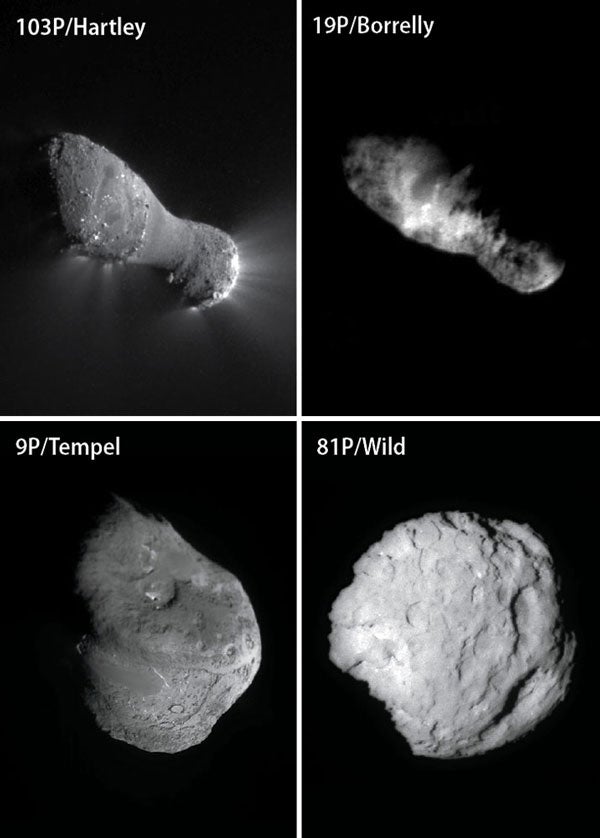While comets are inherently interesting, they can also provide information about other aspects of our solar system. More specifically, comets can be used as laboratories to study the behavior of the stream of particles flowing away from the Sun, known as the solar wind.
Recently, astronomers announced the results of a study using data collected with NASA’s Chandra X-ray Observatory of two comets — Comet ISON (C/2012 S1) and Comet PanSTARRS (C/2011 S4).
Chandra observed these two comets in 2013 when both were relatively close to Earth, about 90 million and 130 million miles for comets ISON and PanSTARRS, respectively. These comets arrived in the inner solar system after a long journey from the Oort cloud, an enormous cloud of icy bodies that extends far beyond Pluto’s orbit.
The graphics show the two comets in optical images taken by an astrophotographer, Damian Peach, from the ground during the comets’ close approach to the Sun that have been combined with data from the Digitized Sky Survey to give a larger field of view. The greenish hue of Comet ISON is attributed to particular gases such as cyanogen, a gas containing carbon and nitrogen, escaping from the comet’s nucleus.
The insets show the X-rays detected by Chandra from each comet. The different shapes of the X-ray emission (purple) from the two comets indicate differences in the solar wind at the times of observation and the atmospheres of each comet. Comet ISON, on one hand, shows a well-developed parabolic shape, which indicates that the comet had a dense gaseous atmosphere. On the other hand, Comet PanSTARRS has a more diffuse X-ray haze, revealing an atmosphere with less gas and more dust.
Scientists have determined that comets produce X-ray emission when particles in the solar wind strike the atmosphere of the comet. Although most of the particles in the solar wind are hydrogen and helium atoms, the observed X-ray emission is from “heavy” atoms, that is, elements heavier than hydrogen and helium, such as carbon and oxygen. These atoms, which have had most of their electrons stripped away, collide with neutral atoms in the comet’s atmosphere. In a process called “charge exchange,” an electron is exchanged between one of these neutral atoms, usually hydrogen, and a heavy atom in the solar wind. After such a collision, an X-ray is emitted as the captured electron moves into a tighter orbit.
The Chandra data allowed scientists to estimate the amount of carbon and nitrogen in the solar wind, finding values that agree with those derived independently using other instruments such as NASA’s Advanced Composition Explorer (ACE). New measurements of the amount of neon in the solar wind were also obtained.
The detailed model developed to analyze the Chandra data on comets ISON and PanSTARRS demonstrates the value of X-ray observations for deriving the composition of the solar wind. The same techniques can be used, together with Chandra data, to investigate interactions of the solar wind with other comets, planets, and the interstellar gas.










